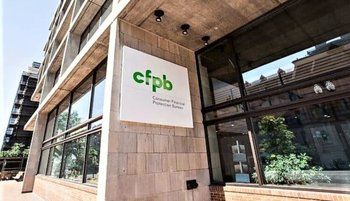Keeping an ARM Could Save You Money
Copyright © 2005, HSH® Associates.
With the Federal Reserve on the case for the last few months, short-term Treasury yields have dropped into the three-percent range. As a result, the interest rates for ARMs being adjusted this year are falling sharply. Whether it happened by chance, foresight, or just plain inertia, holding your one-year ARM may be the best mortgage bet for the rest of this year.
In August 1999, about 6% of all mortgage borrowers opted for a one-year ARM; by the 4th quarter, nearly 10% of all mortgages written were one-year ARMs.
The typical ARM borrower in August 1999 would have got a rate of about 6.43%; nothing special today, but preferable to the 8.31% average for a 30-year fixed rate mortgage (FRM) at the time. A year later, with the Fed raising rates, his ARM rate climbed from 6.43% to 8.43%; without the now-standard two percent per year rate cap, the rate would have been even higher.
Typically, few borrowers have the time, funds, or rate opportunity to refinance for about two years after they get their loan. Not only do they lack the funds to do so, but in the case of our hypothetical ARM borrower, the 30-year FRM averaged 8.14% at the time of his first rate adjustment -- offering too little relief to justify paying significant points and fees.
By early 2001, however, he had more options. FRMs slid into the low sevens, but stopped falling as the Fed began its rate-cutting campaign. Since that time, they've hovered between 7% and 7.40%. That one percentage point break is almost enticing enough to refinance. However, the Fed's recent actions have helped to prop up the economy, keeping long-term rates from falling any further. Meanwhile, short-term Treasury rates are at levels last seen in early 1994.
Our August '99 borrower -- perhaps feeling guilty about not refinancing, and weary of warnings about missing the boat -- is about to get a surprise in their mailboxes. And no, it's not a tax-cut check. He and his fellow ARM borrowers will receive a notice that their new mortgage rate will be 6.45% -- down from 8.43% just a year ago.
A two percent rate drop brings some welcome relief to the wallet. Our borrower's $150,000 one-year ARM, at 6.43% for 1999-2000, had a monthly payment of $941. (Payments have been rounded.) Since he kept the ARM through the next year (2000-2001), his payment jumped by $228 to an uncomfortable $1,142. Now, however, he'll enjoy a payment for the next year of just $947 -- saving him almost $195 per month.
Better still are the cumulative savings. Had our borrower opted instead for the FRM at 8.31%, he would have spent about $36,948 in interest alone since August 1999 -- and he'd still owe $146,152 in principal.
By the end of the third year (July '02), however, our ARM borrower would have spent just $31,478 in interest, and owed just $145,123 in principal. Between the lower interest charges and an increased buildup of equity, the total savings of picking that ARM are almost $6,500 over the three-year period. (Consider that the average rate for the period was only 7.10%.)
This year's interest-rate drop may provide more substantial (if perhaps fleeting) relief than even a full blown refinance would, and at no cost at all. Chalk up one for Alan Greenspan.



